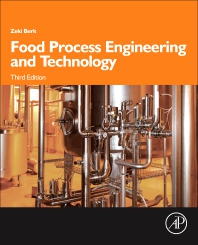Are You FSMA-Ready?

By this time next year, the U.S. Food and Drug Administration (FDA) is expected to issue final rules implementing several major provisions of the Food Safety Modernization Act (FSMA) beginning in 2016. At this year’s Food Safety Preventive Controls Forum, hosted by the American Frozen Food Institute (AFFI), McLean, Va., and the California League of Food Processors (CLFP), Sacramento, Calif., participants were challenged to answer a question with sweeping implications for their food production facilities—are you FSMA-ready?
FSMA is the most significant revision to U.S. food safety law since the 1930s. The regulations implementing this groundbreaking law are of corresponding significance. Quite simply, they will change the way food is produced and facility inspections are conducted for decades to come.
Elizabeth Fawell of Hogan Lovells US LLP, AFFI’s legal counsel headquartered in Washington, D.C., provided an overview of the four supplemental proposed rules FDA recently released under FSMA.
An effective food safety system starts with a science- and risk-based hazard analysis. In performing a hazard analysis, it is important to assemble a cross-functional team and perform a product and processing profile that describes the product and its intended use, including a step-by-step flow diagram of the manufacturing process. Although there is flexibility in performing the hazard analysis and identifying those hazards that must be addressed with preventive controls, a company’s hazard analysis must be documented and supported.
Recordkeeping will be a major compliance challenge under the new rules. As one presenter at the forum noted, “we are getting killed by paperwork.” In-plant activities will need to match the facility’s records and food safety plans. Remember, if it isn’t documented, it didn’t happen. And, if it is documented, that is the way it happened. Further, records should be able to tell a company’s entire food safety story. “Say what you do, do what you say and prove it.”
Validation and verification require additional attention. Validation establishes that implemented preventive controls are adequate to control identified hazards (that the food safety plan will work). Validation requires supporting documentation, including scientific and technical information such as expert advice, peer-reviewed journal articles, scientific studies, agency issuances or other similar documents. If scientific or technical information is not available or sufficient, FDA will expect companies to conduct studies to validate their preventive controls. Verification means those activities that determine whether a control measure is operating as intended and that the system is operating according to the plan (that you are doing what you said you would do). FDA will expect facilities to conduct testing programs and review their food safety plan records, including monitoring records, corrective actions, testing records and supplier verification records. FDA is likely to focus on corrective actions during inspections, making review of corrective actions an especially important verification activity.
Start working now to ensure that your facilities have a food safety culture. That means making sure you have strong food safety training programs in place for your employees, and that you are teaching the “why” behind specific activities. How can you tell if you have a culture of food safety in place? For operations and QA managers, nothing replaces boots on the ground. Get into your plants and see if the food safety plan is working. Talk to your team and make sure they understand their roles and responsibilities related to the food safety plan.
The good news for food producers is that FDA intends to “educate before it regulates.” Nonetheless, now is the time to start getting ready for FSMA.
Looking for a reprint of this article?
From high-res PDFs to custom plaques, order your copy today!








